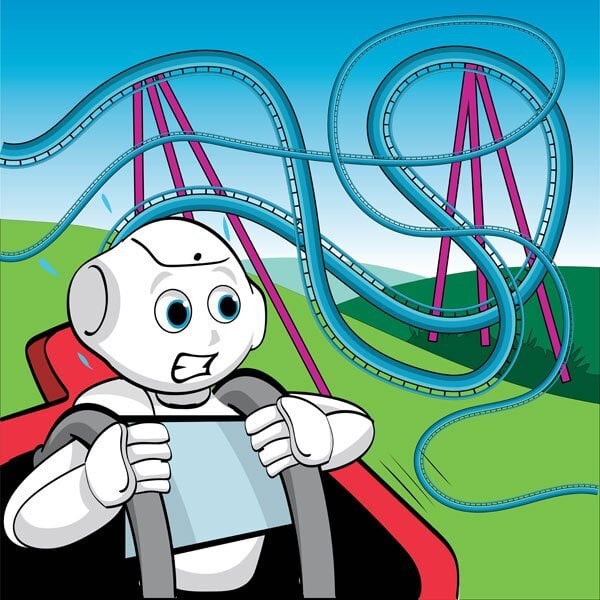Lesson Modules
Teaching Tips:
As a teacher, you know your students. So, use these lessons as a guide and feel free to make adjustments that will facilitate your students learning.
Materials to run lesson:
- Pepper robot
- Student computers (either individual or 1 per small group)
- Teacher computer
- Choregraphe program on Teacher/Student computers
- Choregraphe file for this lesson
- Projector
- A place for projection (projector screen/large blank wall space)
This module is for instructors only. See the Teacher Tips for details.
Teaching Tips:
- Project the observation questions on the Class View. Tell your students that “We are going to listen to the Three Little Chickens story again and then answer these questions. So as you listen to the story, think about your answers to the questions”.
- Have students make a circle around the robot to listen to the story.
- Run this Choregraphe file on your robot.
- Pick 1 student to respond to the robot when the robot asks “Should the chickens trust the wolf and let him in?”. Make sure the student is facing the robot when they respond (yes/no).
- Play the “Three Little Chickens” story using the robot.
- Show the Class View directions on accessing the observation questions.
- Direct the students to answer the observation questions on their computers.
- Once students are finished, show their responses on the Class View to facilitate a conversation.
Teaching Tips:
After you show the students their goal for the day, have them complete their planning question in the student view.
Teaching Tips:
Teach your students how to use the tactile sensors. There are screenshots on the class view. You could also demonstrate by projecting Choregraphe and going through the actions in real time. Ask your students when the tactile sensors are used in the “Three Little Chickens” story (Answer: When the robot says: Touch my head if you want me to tell you a story.) Then show the workspace sequence from the “Three Little Chickens” story on the class view. Discuss how the sequence works. Have students answer their planning questions on the student view.
You could also demonstrate by projecting Choregraphe (use this Choregraphe file for this lesson) and going through the actions in real time.
Ask your students when the tactile sensors are used in the “Three Little Chickens” story (Answer: When the robot says: Touch my head if you want me to tell you a story.) Then show the workspace sequence from the “Three Little Chickens” story on the class view. Discuss how the sequence works. Have students answer their planning questions on the student view.
(Answer: When the robot says: Touch my head if you want me to tell you a story.) Then show the workspace sequence from the “Three Little Chickens” story on the class view. Discuss how the sequence works. Have students answer their planning questions on the student view.
Then show the workspace sequence from the “Three Little Chickens” story on the class view. Discuss how the sequence works. Have students answer their planning questions on the student view.
Discuss how the sequence works. Have students answer their planning questions on the student view.
Have students answer their planning questions on the student view.
- Tactile head
- Tactile L. Hand
- Tactile R. Hand
- 1 option
- 3 options
Teaching Tips:
If the students are struggling to get the robot to do what they want it to do - do not correct them.Instead, ask them guide questions to assist in their development of independent problem-solving skills. This takes time to build so be patient with your students.
Some examples of guide questions:
- What is not working the way you want it to? Let’s look at your code together.
- Can you show me where you think the problem might be?
- What resources could you use to find the solution to your problem?
Additional Activities:
- Have students show each other their stories.
- Students can provide feedback on the story.
If you are struggling to get the robot to do what you want it to do - do not feel bad about the error you made. Developing independent problem solving skills takes time to build so be patient with yourself.
Ask yourself these guide questions:
- What is not working the way I want it to? Can I ask someone to look at my code with me?
- Where do I think the problem might be?
- What resources could I use to find the solution to the problem?
Teaching Tips:
Reflection
Give students a quiet time to answer the reflection questions on the student view. If time is allowed, discuss with the class what went well and what could have gone differently.
Closing
Store student files: Put the student files on a thumb drive or store them in some way so that the students can continue working on their project in the next lesson.
Computers/Tablets: Make sure all student computers/tablets are plugged in.

